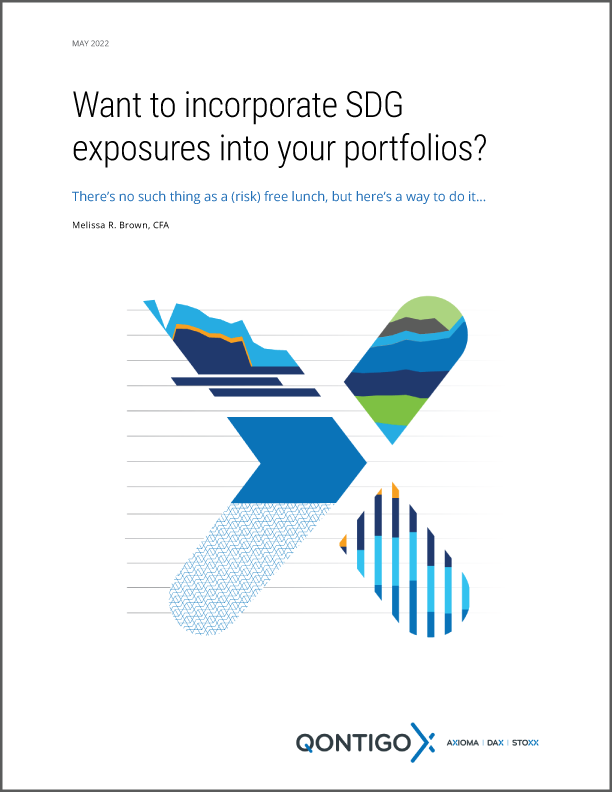In a recent blog post, we discussed key considerations for managers incorporating Sustainable Development Goals (SDGs) into their portfolios. We showed that taking on more active risk led to higher potential SDG exposure and that one could achieve meaningful exposure even at a relatively low level of active risk—though the level of exposure varied by SDG.
Of course, making one set of tilts in a portfolio may lead to other exposures, some desirable and some less so. As a follow up to our original analysis, we now take a look at what some of those bets might be.
We used the end-of-year 2021 data from the Sustainable Development Investments Asset Owner Platform (SDI AOP) to run simple optimizations with the objective of maximizing exposure (defined by the percent of revenue) to one, two or all SDGs. The STOXX® Global 1800 Index was our investment universe and benchmark. The only constraints we employed were to be fully invested with a 3% target tracking error. We created four active portfolios:
- Maximize exposure to all SDGs
- SDG-3 (Good Health and Well Being)
- SDG-7 (Affordable and Clean Energy)
- A combination of SDG-6 and SDG-13 (Clean Water and Sanitation & Climate Action)
As in our earlier study, we found that different SDG target objectives led to much higher overall SDG exposure. For this study we dug a bit deeper to find very different levels of concentration, distributions of risk, sector, country and factor exposures.
